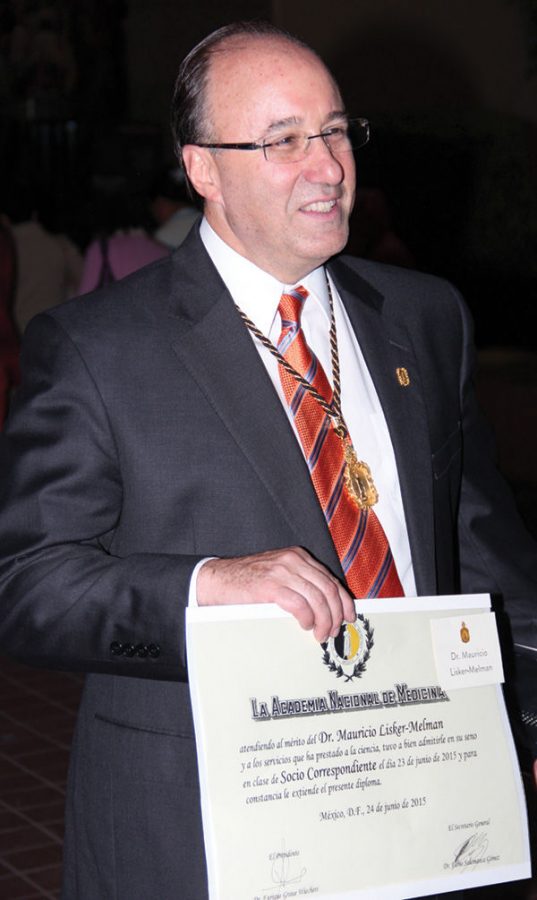‘Science and art’ come together in St. Louis doctor’s work
Published August 17, 2016
The Jewish community in Mexico City is not large, Dr. Mauricio Lisker-Melman says, but growing up in the middle of it, he was always aware that it wielded great influence.
“There are only about 40,000 Jews in one of the biggest cities in the world, but the Jewish community impacts every aspect of life in Mexico, including culture, science, education, politics and art,” he said. “It was a treat to grow up there.”
Lisker-Melman, 61, is a gastroenterologist and liver specialist with special expertise in viral and nonviral hepatitis and liver tansplantation. He comes from a family of medical professionals, and that, along with his own soul-searching questions about human physiology, influenced his career path.
He made time recently to talk about his life and his work.
You are a member at Traditional Congregation in Creve Coeur and your sister Nancy Lisker is the director of the St. Louis chapter of the American Jewish Committee. Talk a bit about your upbringing.
We were raised as secular Jews with roots in Jewish traditions and culture, strong emotional ties toward Israel and the sense that we inherited an important religious tradition.
What led to your interest in medicine?
I was surrounded by family members who were physicians. My grandmother studied dentistry in Russia, my mother’s sister and her husband were doctors, and my father’s cousin was a medical researcher. Yet it was my dad, a urologist and surgeon, who particularly influenced me. He always had strong humanist feelings toward practicing medicine, and I often heard his inspiring stories about healing and helping.
So you took all this to heart?
Without knowing how or why, maybe by osmosis, I started to ask myself why we breathe. Or why our heart beats. Why do we feel? What is pain? Over time, I had a compelling need to answer these questions.
How did you proceed?
I started reading anatomy and physiology papers, I dissected insects and examined my pets. I wanted to go deeper into biology, physiology, the interaction of the body and the soul – and the healing process.
You finished your medical training in 1984 in Mexico City and then worked three years at the National Institutes of Health in Bethesda, Maryland. Back in Mexico, you headed a hepatitis laboratory and taught medicine. In 2000, you were hired at Washington University’s School of Medicine as director of the hepatology program. What is it about the liver that has held your interest all these years?
The liver is an important organ, the factory of the body. It also is important in the arena of public health, in terms of alcoholism, obesity or viral hepatitis. Also, my first year of medical school, I developed viral hepatitis A, and that may have been the first sign from God that I should study viral hepatitis.
Talk a bit about working with individuals who have liver transplants.
Modifying the natural progression of a disease is a fascinating thing, like creating art. Now we can cure hepatitis C and control hepatitis B. If we fail in preventing or treating liver disease in a timely manner, the last resort may be to change the organ that will not recover.
What are the challenges of the surgery?
Liver transplantation is one of the most fascinating and complicated surgeries, a gigantic enterprise in the eternal fight between an immune system that tries to protect us from foreign organisms and our effort to teach or treat the immune system to think the new liver is not a threat.
What do you like best about your work?
The incredible opportunity to enter into the life of an individual you don’t know, one who hopes you will help, is incomparable. You sit there, trying to know this person, and at the same time you also learn about yourself. In that moment, science and art come together.














